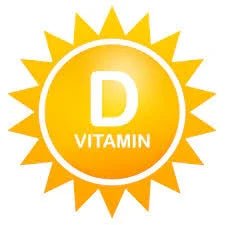
Vitamin D3 – Things to consider
As humans, we often fall prey to myopia. We forget the complexity of life and nature and focus on just one solution. Often it’s the easiest option—and if something is good for you, then more must be better! Does that also apply to vitamin D3?
Unfortunately, vitamin D3 supplementation has also fallen victim to this typically human way of thinking. Vitamin D3 seems to be the most universal supplement in the world. Everyone—from the elderly to athletes and even newborn babies—is told to take vitamin D3.
In our view, vitamin D3 is a valuable supplement—but are ultra-high doses truly meaningful, is the full picture being told, or are we overlooking complexity again?
Small detail! Vitamin D3 sulfate versus vitamin D3
When the skin is exposed to the sun’s ultraviolet radiation—specifically UVB—vitamin D3 sulfate (cholecalciferol sulfate) is produced. Contrary to many claims, this is not the same form as vitamin D3 (cholecalciferol) from supplements, which is not sulfated.
This is a very important distinction that you normally won’t find in articles about vitamin D3. People love to lump vitamin D3 supplementation together with sun exposure. Popular phrases like “sun vitamin” or “sunlight in a bottle” are the result. This isn’t entirely correct, because the health effects of vitamin D3 from sunlight do not translate one-to-one to vitamin D3 supplements.
The difference between the two forms includes the fact that vitamin D3 sulfate is water-soluble, whereas “regular” vitamin D3 is not. This gives vitamin D3 sulfate a wider reach in the body.
Beyond biochemical properties, their actions differ too. Vitamin D3 sulfate does nothing with calcium transport, while vitamin D3 does. It actually appears to be the sulfated form that is responsible for effects on, among other things, the immune system, mood, and cardiovascular system. The sulfate moiety itself plays an important role here—the D3 part alone isn’t the whole story.
From an evolutionary health perspective, it’s clear that humans have always obtained vitamin D3 from the sun, a little from food, but not via concentrated, isolated oral intake. It’s therefore logical to suspect a difference. Biology is about details—vitamin D3 supplements are not a replacement for sunlight!
|
Vitamin D3 supplements in winter
Especially in autumn and winter, generous amounts of vitamin D3 are taken because the sun isn’t strong enough to form D3 sulfate via the skin. Precisely in these periods, D3 levels gradually decline.
It seems logical to top up D3 levels. But how did it work in the past—evolutionarily speaking? All fat-soluble vitamins (A, D, E, and K) can be stored in the body. For vitamin D, this is in adipose tissue and the liver.
Unlike modern humans, our ancestors spent enough time outdoors in spring, summer, and autumn to build substantial vitamin D3 reserves. These were sufficient to get through winter. The exact “normal” or natural winter blood levels aren’t completely clear, but seasonal variation—just as with cholesterol and other hormones—seems very logical.
| Did you know vitamin D3 resembles a hormone more than a vitamin? That applies to both its chemical structure and its functions in the body. |
If vitamin D3 is naturally highest in summer, shouldn’t it be lowest in winter? Might we disrupt the body by taking high doses in winter? A 2009 study offers an important clue. The conclusion reads:
“The underlying mechanism for these metabolic abnormalities is that vitamin D is involved in the regulation of β-oxidation in WAT and directly suppresses the expression of UCP1 and UCP3 in BAT. These data unveil a novel aspect of vitamin D biology in regulation of energy metabolism.”
In other words, vitamin D3 suppresses the expression of the uncoupling proteins UCP1 and UCP3 in brown fat. Uncoupling proteins help regulate body temperature by using energy for heat rather than ATP production—very helpful in winter, and not something you want to suppress!
If the sulfate moiety also has important health effects—as noted above—effects that are seemingly misattributed to vitamin D3, then it’s important to get sufficient sulfites from food in winter. Don’t focus only on vitamin D3: eat plenty of seafood, eggs, onions, and garlic. MSM as a supplement is also a good source.
It appears that—much like with adequate melatonin, omega-3 fatty acids, and magnesium—the body functions optimally only when we respect our evolutionary past. Unfortunately, today’s world is so different that we must make wise choices and adjustments based on the whole picture.
Active vitamin D3
Before vitamin D3 from supplements can be used by the body, it must first be converted in the liver and kidneys into the “active” form, calcitriol. Magnesium is an essential cofactor in this transformation. If magnesium is insufficient, producing the active form is physiologically not possible.
If active vitamin D3 blood levels don’t rise, taking more isn’t always the answer—look at magnesium first. If levels still don’t increase after a period of magnesium supplementation, check water intake. Magnesium is hydrophilic and needs adequate water to work properly.
A further, deeper layer concerns what happens at the vitamin D3 receptor after conversion to the active form. Receptors transmit signals when a signaling molecule—here, active vitamin D3—binds. Through this “key and lock” mechanism, many effects are realized.
Because the molecular structure of vitamin D3 closely resembles that of calcitriol, the “active version,” vitamin D3 itself can bind to the vitamin D receptor and thereby block the action of active vitamin D3. Randomly taking higher doses is therefore unwise, even though vitamin D3 toxicity is low.
Cod liver oil—isn’t that also a vitamin D3 supplement?
The most ideal way to obtain vitamin D3 is direct sun exposure. In addition, taking a quality cod liver oil or eating vitamin-D3-rich foods is another good, natural way to get vitamin D3. In whole food sources, vitamin D3 appears in balance with other nutrients, safeguarding the natural equilibrium.
Isolated vitamin D3 supplements for general use in sensible doses up to 1000 IU are proven effective—but less “natural.” For specific indications or individual situations, different dosages may be chosen depending on personal context. Here, testing = knowing. And don’t let the “optimal” be the enemy of your health.


